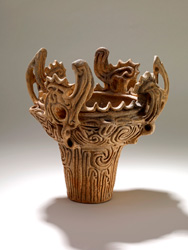
Flame and Water Pots: Prehistoric Ceramic Art from Japan
Until 20 January 2013, London
This is a rare opportunity to see two spectacular Japanese prehistoric pots dating from the Middle J?mon period (3500-2500 BCE).
|
 ¡Ê±÷ë·¿¡ËJomon flame type pot |
Until 20 January 2013 |
 |
|
Room3 (The Asahi Shimbun Display), British Museum, London WC1B 3DG |
||
Tel: 0220 7942 2000
|
||
British Museum |
||
